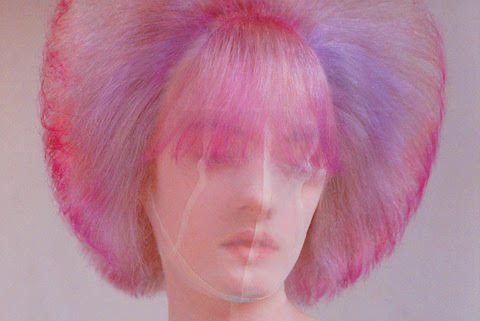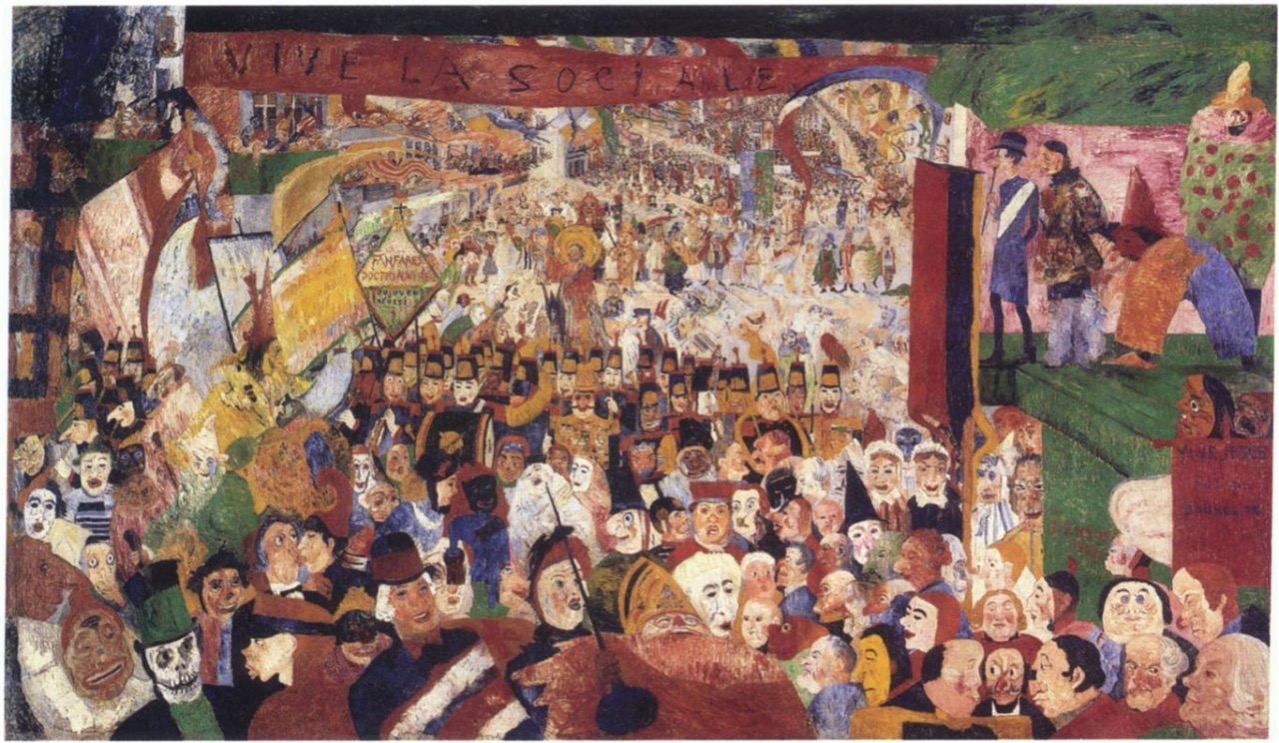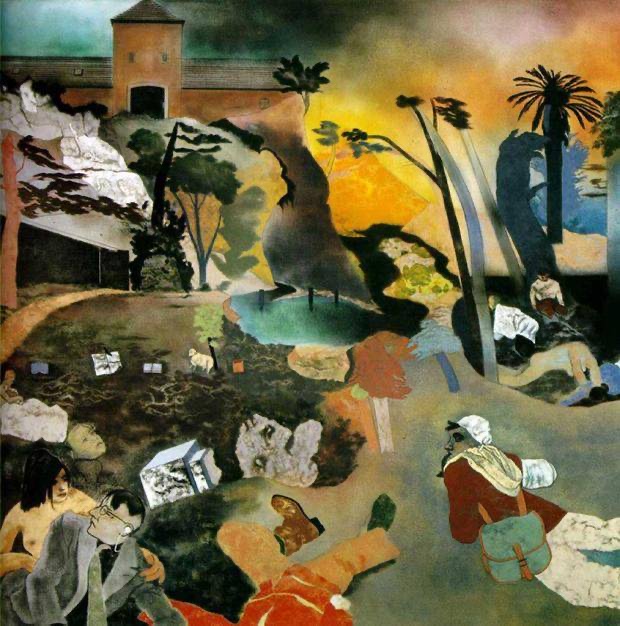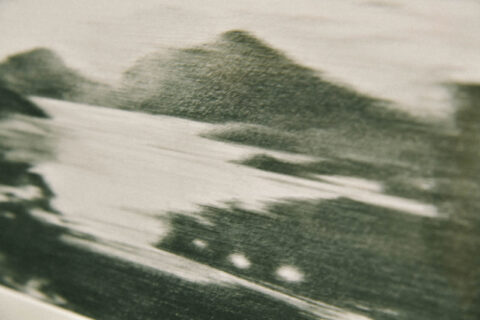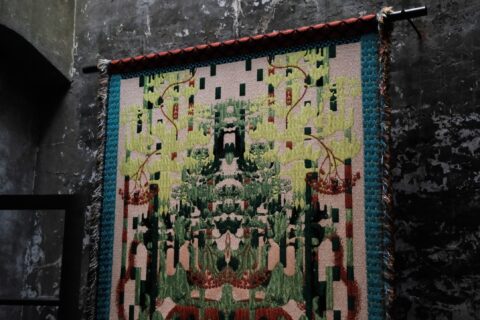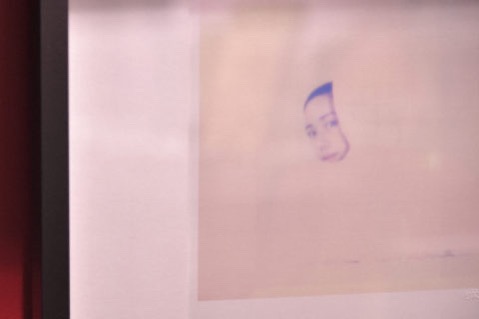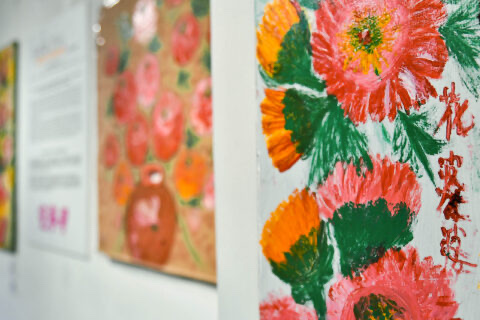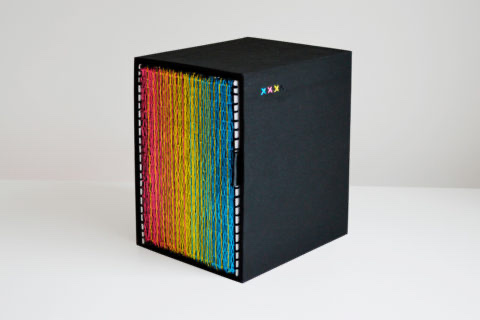詩人T. S. Eliot從未直接寫關於藝術或美學的文學作品,他曾經這樣說「I distrust and detest Aesthetics, when it cuts loose from the Object, and vapours in the void」。生於十九世紀末,是印象派風格盛行的歐洲。第一次世界大戰前從美國移居英國,經歷大戰目睹世界瘡痍滿目。在這樣的背景下縱使他說美學是空洞無物,他的詩中卻有豐富意像及視覺元素,如早期的作品《Portrait of Lady》(1917):
And I must borrow every changing shape
To find expression … dance, dance
Like a dancing bear,
Cry like a parrot, chatter like an ape.
Let us take the air, in a tobacco trance –
Well! and what if she should die some afternoon,
Afternoon grey and smoky, evening yellow and rose;
他的長篇詩《The Waste Land》更啟發了後來的藝術家。寫於1922年戰後的歐洲,在英國他看到絕望與荒謬,縱使四月的倫敦應該是春回大地的時間,對詩人來說仍然是一年裡最殘酷的月份 —— 「April is the cruellest month, breeding」。全詩分成五個部份,關於希望幻滅;死亡與恐懼;宗教末世;審判。以比喻、形象化等手法將戰後城市哀傷具體呈現。美國畫家R. B. Kitaj大半生都在英國定居,他對猶太人在歐洲的遭遇感受深刻,在畫作中經常以殘酷人性為主題。Kitaj覺得Eliot的《The Waste Land》將難以理解的悲傷凝聚在詩中,他的畫作《If Not, Not》嘗試用Eliot那種凝煉的手法,將猶太大屠殺慘劇的歷史表現在畫布上。畫中磚紅色的建築物就是奧斯威辛集中營,在那前面是灰黑及扭曲的生靈塗炭。
Eliot的《The Waste Land》具穿越時空及預言意味,寫於1922年但詩中意像「The river’s tent is broken; the last fingers of leaf / Clutch and sink into the wet bank. The wind / Crosses the brown land, unheard. The nymphs are departed.」似在預示大戰過後,人類傷痛並未完結。然後二十多年後第二次大戰再臨歐洲大地。遠早於Eliot,比利時畫家James Ensor的 《Christ’s Entry Into Brussels in 1889》用繽紛色彩描繪耶穌到臨布魯塞爾,畫作完成於1888年,Ensor像在預告明年這個大日子將會充滿嘉年華氣氛,可以細心一看當中有很多死亡的意象。這畫像穿越時空般描繪了幾十年後的1940年,布魯塞爾被德軍攻陷法國也因此失守,二次大戰從此進入最艱險的時期。Ensor的畫跟Eliot的詩就是一場隔空的對話,前者色彩繽紛的人世卻充滿殘酷;後者在四月回春的英倫卻看見血在流,在肯特郡東側海邊的馬蓋特小鎮,看著海卻無言。
‘On Margate Sands,
I can connect
Nothing with nothing.’
(Above) Christ’s Entry Into Brussels in 1889 (1888) James Ensor
(Below) If Not, Not (1975-6), R.B. Kitaj, National Galleries of Scotland
Poet T. S. Eliot had never written any literary work directly about arts or aesthetics. He once said, “I distrust and detest Aesthetics, when it cuts loose from the Object, and vapours in the void.” He was born in the late 19th century, when impressionism took Europe by storm. Before the First World War, he left the United States and moved to live in the United Kingdom, where he later lived through the war and saw the pitiful sight of destruction it brought upon the world. Against this background, even though he once said that aesthetics is without substance, his works are rich in imagery and visual elements. A case in point is Portrait of Lady (1917).
And I must borrow every changing shape
To find expression … dance, dance
Like a dancing bear,
Cry like a parrot, chatter like an ape.
Let us take the air, in a tobacco trance –
Well! and what if she should die some afternoon,
Afternoon grey and smoky, evening yellow and rose;
His long poem The Waste Land even became a source of inspiration for artists in later years. He wrote the poem in 1922, in post-war Europe, and what he saw in England then was despair and absurdity. April should have been the time when we welcome the dawn of spring, but to this poet, it is the cruellest month of the year — ‘April is the cruellest month, breeding’. The whole poem is divided into five sections, about dashed hopes, death and fear, religious decay, and judgment. With metaphors and imagery, it concretely conveys the sadness of the city following the war. R. B. Kitaj is an American painter who had spent more than half of his life living in the United Kingdom. He had strong feelings about the treatment of Jewish people in Europe, and most of his paintings take on the theme of humankind’s cruelty. Kitaj felt that The Waste Land by Eliot is an embodiment of incomprehensible sadness. In his painting titled If Not, Not, he tries to employ Eliot’s succinct way to represent the tragic history of Jews massacres on the canvas. The red-brick building in the painting is Auschwitz concentration camp, and at the front is the misery and suffering of living things, being dark, grey and twisted.
The Waste Land by Eliot carries a prophetic meaning transcending through time. Even though it was written in 1922, the lines “The river’s tent is broken; the last fingers of leaf/ Clutch and sink into the wet bank. The wind/ Crosses the brown land, unheard. The nymphs are departed.“ seem to predict that human suffering has not ended after the war. And then twenty odd years later, the Second World War raged across Europe. Much earlier than Eliot, in 1988, Belgian painter James Ensor created Christ’s Entry Into Brussels in 1889, in which he used vivid colors to depict Jesus’s arrival in Brussels. It would seem Ensor was predicting that festive atmosphere would abound on this big day the following year. However, a more careful look at the work will reveal that death-related imageries are aplenty. It was as though this painting had travelled through time to 1940, a few decades later, when Brussels was invaded and eventually surrendered to the the German army, and France subsequently fell to the Germans too. It marked the period when the Second World War entered the most difficult period. Ensor’s painting and Eliot’s poem are having a conversation through the space of time. The former is about a colorful world full of cruelty while the latter shows blood still flowing at the arrival of spring, in a small seaside town called Margate to the East of Kent, facing the sea with no word to say.
‘On Margate Sands,
I can connect
Nothing with nothing.’
